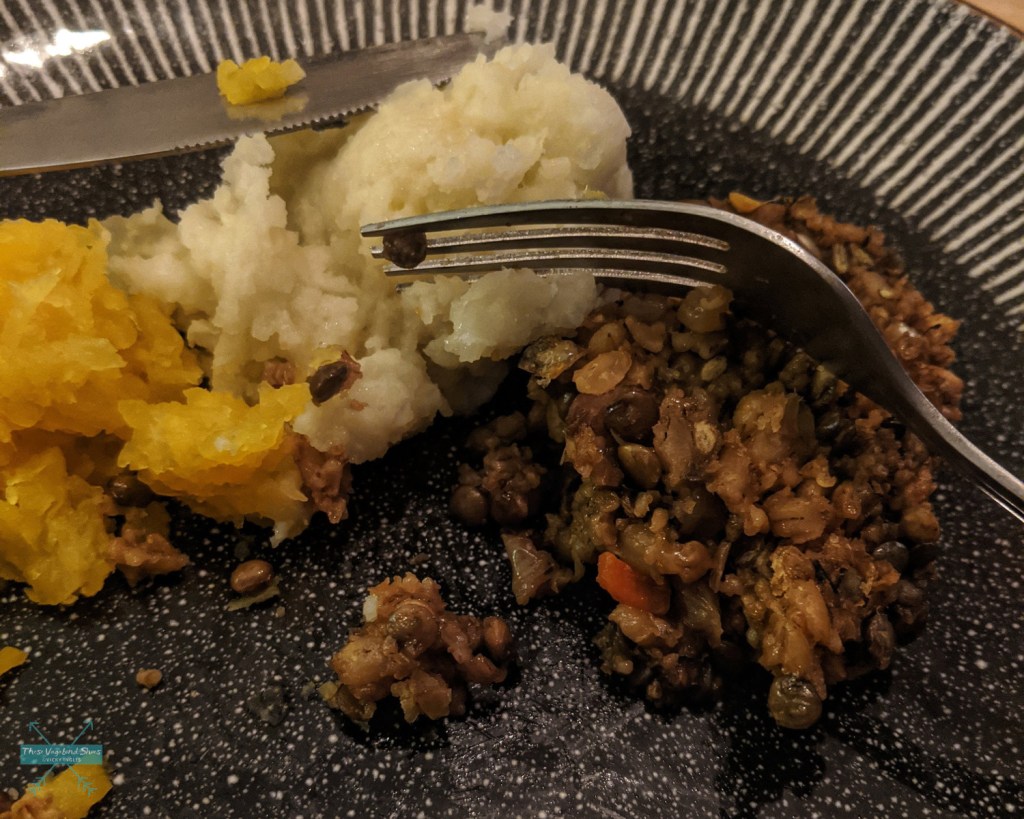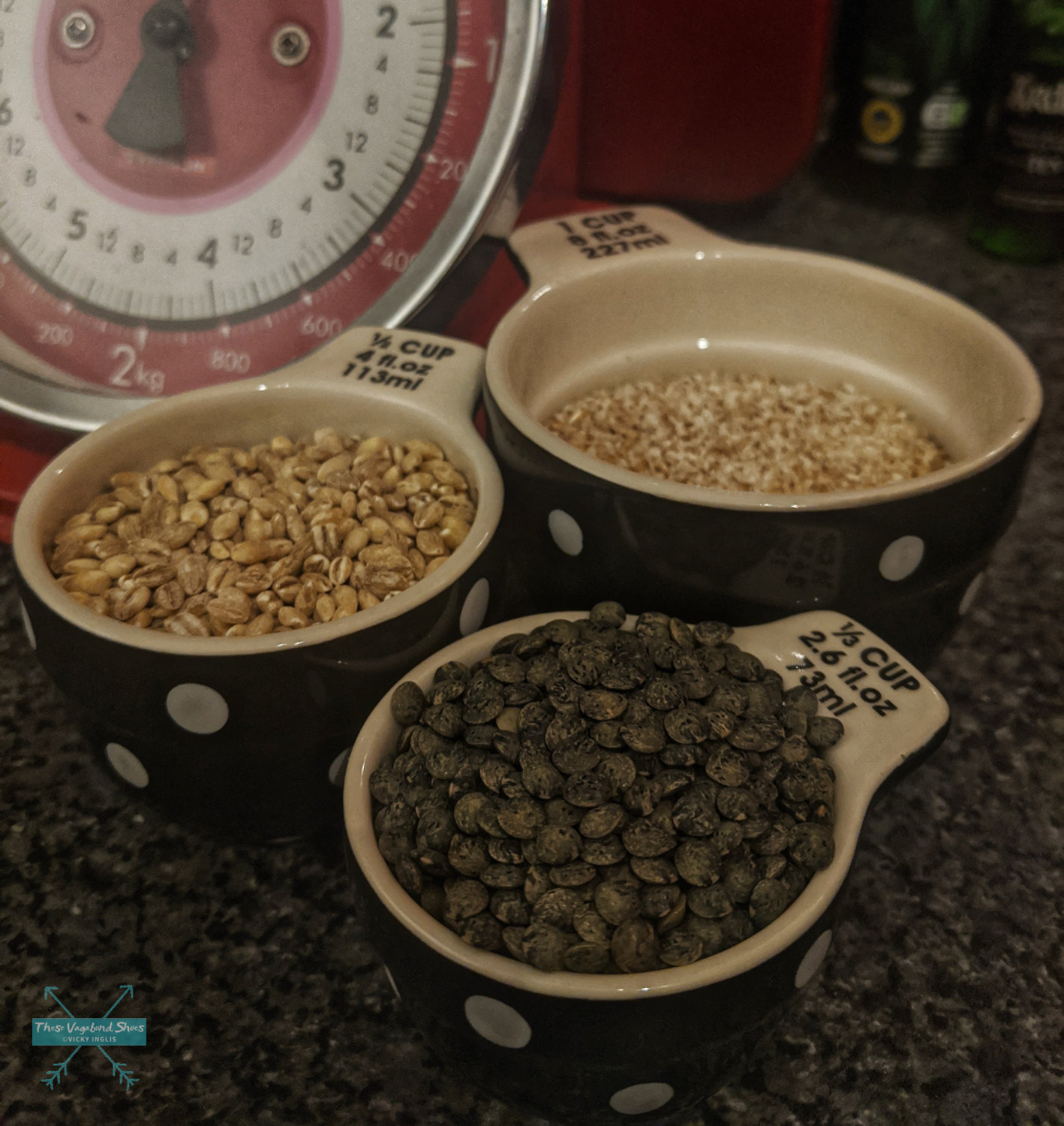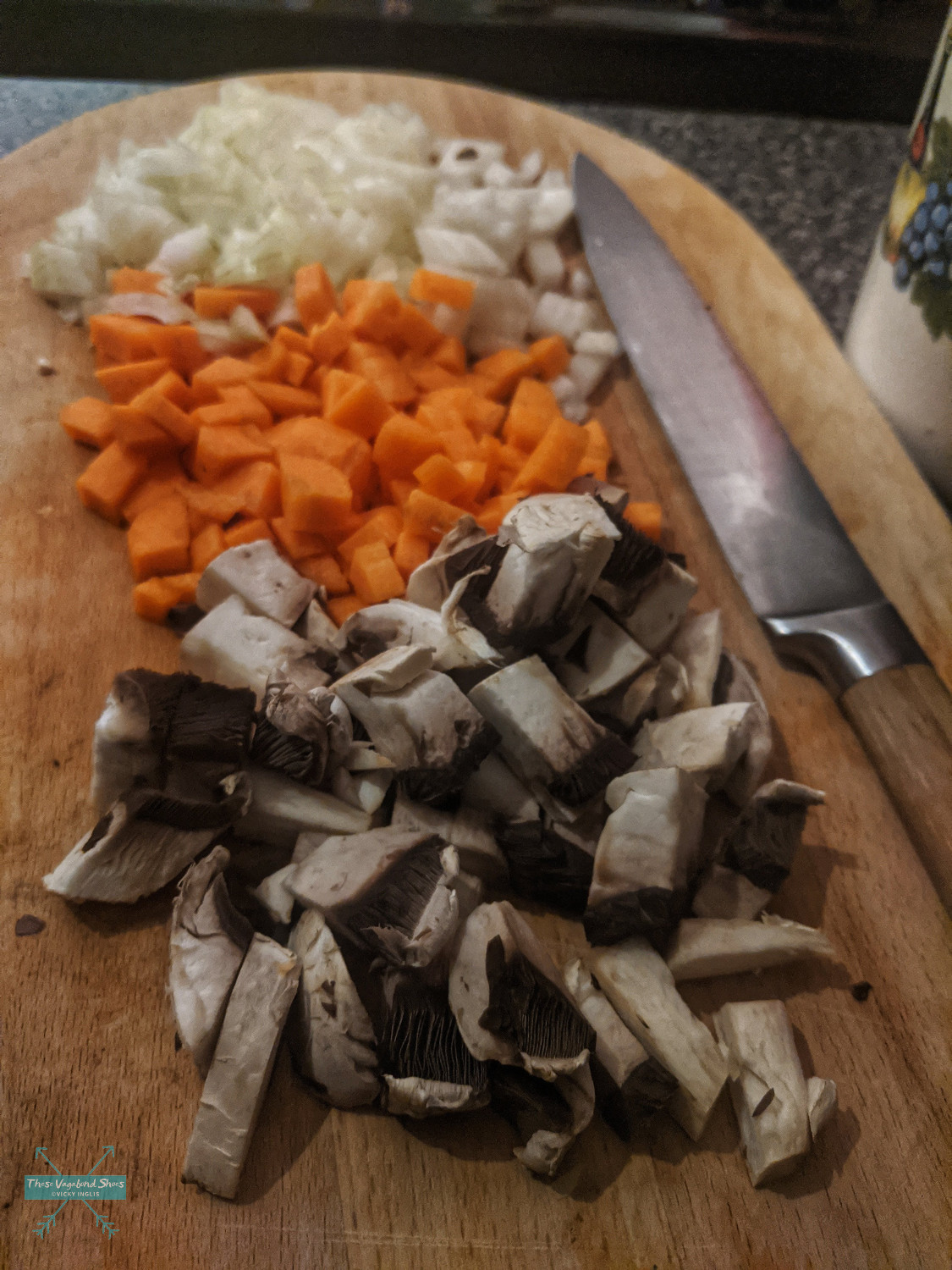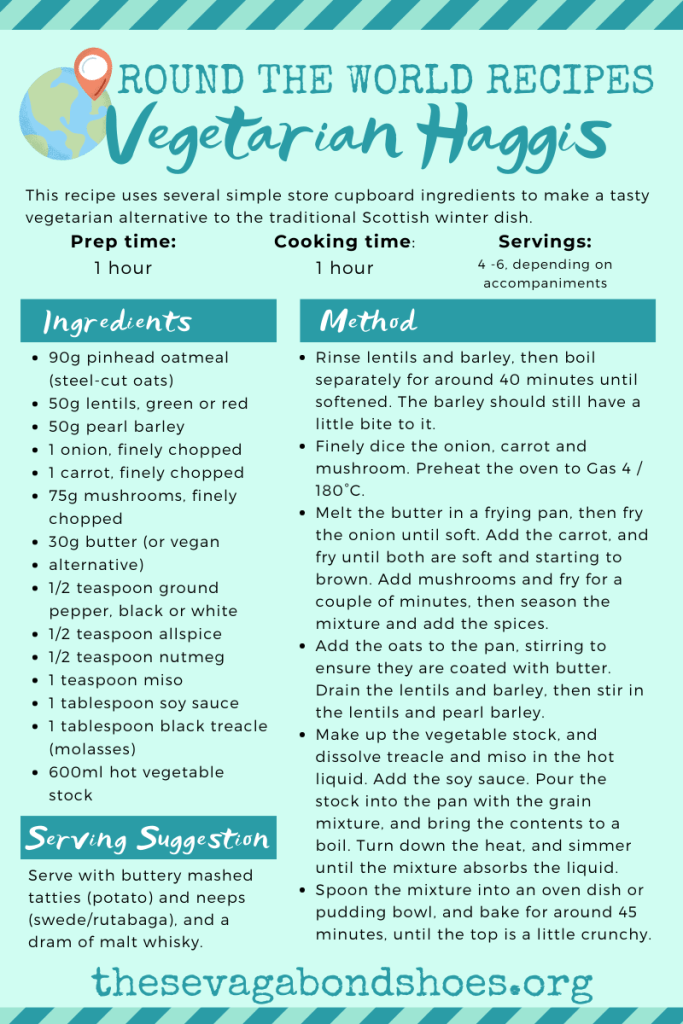While international travel has been off the cards for a while now, I’ve been recreating my favourite meals from around the world in my home kitchen, and I’m now feeling confident enough to share some of them with you.
I thought with Burns’ Night just around the corner, I’d start off with my recipe for a vegetarian haggis.

What the hell is a haggis anyway?
A smallish beastie, endemic to the highlands, islands, and rough country of Scotland, a haggis has been compared to creatures such as lemmings, marmots, and guinea pigs*. With a long, golden brown mane, they are perfectly camouflaged against the heather-clad hillsides of the highlands. Highly adapted to their mountain homes, wild haggis have longer legs on one side of their body than the other, enabling them to traverse the most precipitous of hillsides without losing pace, which could leave them highly vulnerable to predation by eagles (probably).
*By me, just now.
It takes considerable hill tracking skills and many hours of watching to observe a wild haggis in its native environment. The best place to see one for yourself, especially if your time in Scotland is limited, is in the natural history section of the excellent Kelvingrove Gallery and Museum in Glasgow. They’re known to have a particular aversion to bagpipes, which are said to sound like the distress call of an adult haggis caught by an eagle. The skirl of the pipes can cause a haggis to start in fear and tumble downhill, which is why professional haggis hunters often play the bagpipes, and why you never usually see wild haggises on the Royal Mile in Edinburgh in August.
Shut up you liar.
TRUE FACT!
Really?
No, not at all. A traditional haggis is a savoury pudding comprised of the pluck of a sheep (the heart, liver, and lungs), chopped and mixed with onion, oats, suet, and spices, then stuffed into the stomach bag and boiled. While now considered something of a celebration dish, preparing a haggis would have been a key part of the butchery and cooking skills of crofters and peasant farmers in rural areas in times past. By using the gralloch (offal), blood, suet, etc. of animals to make haggis, and similar products like black pudding and white pudding, and so on, crofters could ensure that not a scrap of available protein was wasted, and preserved food was available to fill the hungry gap through late winter and early spring when vegetables and grain were in short supply.
Almost every livestock farming culture has their own version of a haggis, and similar means of using and preserving the products of a hunt are ancient. It’s thought the version of the dish familiar in Scotland was brought here by Viking raiders and Norse settlers from Scandinavia, but may well have been adapted from other origins. The association with Scots was thoroughly cemented into Scottish culture by Robert Burns, in his poem “Address to a Haggis“.
A good vegetarian haggis captures the richly-flavoured, warmly-filling bulkiness of the original that makes it an ideal winter comfort food, without, obviously, the offal content. The spices and seasonings used in this recipe (pepper, allspice, nutmeg, miso, and soy) give the elements of sweetness, umami, and fiery heat that you hope for from a haggis, but you could also use a pinch of coriander, some dried thyme, and a spoonful of marmite instead of the miso.
How to eat haggis
Haggis forms the centrepiece of a traditional Burns Supper meal. Formal gatherings are held on 25th January, the anniversary of the birth of Robert Burns, Scotland’s national poet, where the magnificent creature is brought to the table accompanied by the skirl of bagpipes. A lengthy verse is recited in praise of the haggis, before the host makes a grand show of stabbing the pudding with a knife, spilling the contents out across the serving platter.

The haggis is served with tatties (mashed potato) and neeps (mashed swede/rutabaga), or clapshot (mashed tatties and neeps mixed together), and a whisky cream sauce or just a dram of whisky poured over.
Other traditional ways to eat haggis are: piled onto a bowl of nachos, smothered in melted cheese; wrapped into a pakora, with a spicy chilli whisky dipping sauce, or battered and deep-fried, with a portion of chippy chips, as a haggis supper.
The best Vegetarian Haggis you’ll ever have
This recipe uses several simple store cupboard ingredients to make a tasty vegetarian alternative to the traditional Scottish dish.
- Servings 4-6, depending on accompaniments
- Prep time 1 hour
- Cooking time 1 hour
Ingredients
- 90g pinhead oatmeal (also known as steel-cut oats)
- 50g lentils, either green or red
- 50g pearl barley
- 1 onion, finely chopped
- 1 carrot, finely chopped
- 75g mushrooms, finely chopped
- 30g butter (or vegan alternative)
- 1/2 teaspoon ground pepper, black or white
- 1/2 teaspoon allspice
- 1/2 teaspoon nutmeg
- 1 teaspoon miso
- 1 tablespoon soy sauce
- 1 tablespoon black treacle (also known as molasses)
- 600ml hot vegetable stock
Method
- Prepare the lentils and pearl barley. Rinse in cold water, then boil separately for around 40 minutes until they have softened. The barley should still have a little bite to it.
- Finely dice the onion, carrot and mushroom. Preheat the oven to Gas 4 / 180°C.
- Melt the butter in a frying pan, then fry the onion until soft. Add the carrot, and fry until both are soft and starting to brown. Add the mushrooms and fry for a couple of minutes to soften, then season the mixture and add the spices. Haggis is traditionally quite peppery, with a bit of sweetness from nutmeg and allspice, but other spices and herbs can be added or substituted according to your taste.
- Add the oats to the pan, stirring to ensure they are coated with the butter. Drain the lentils and the barley, then add the lentils and pearl barley to the vegetable mix, stirring in thoroughly.
- Make up the vegetable stock, and dissolve the black treacle and miso in the hot liquid. Add the soy sauce to the stock. Pour the stock into the pan with the grains and the vegetables, and bring the contents to a boil. Turn down the heat, and simmer until the mixture absorbs the liquid and becomes thick and gloopy. Taste to ensure the seasoning and spices are right.
- Spoon the mixture into an oven dish or pudding bowl, and bake for around 45 minutes, until the top is a little crunchy. If you fancied creating something with the stature of a Burns’ Supper haggis, then the mixture could be rolled inside poached savoy cabbage leaves before baking, for ritual disembowelment later.




Printable Recipe Card
Drinking Notes
Of course, the correct accompaniment for the traditional Burns Supper haggis, neeps, and tatties is a malt whisky, and there’s hundreds of possibilities depending on your personal taste. The ideal choice would be something that’s a bit sweet and spicy, with light peat smoke, so that it doesn’t overpower the food.
Haggis is quite rich and spiced, and though a vegetarian option is a little lighter, it would still go well with a full-bodied red wine like a cabernet sauvignon or a merlot.
Have you tried making a vegetarian haggis at home? Let me know how you get on in the comments below.
Want to try this recipe for yourself? Why not pin it for later?






A great read of the finest kind! I have never ventured towards haggis land (maybe something like it in Australia I have eaten?) though this recipe really reminds me of a dish I have eaten with gusto on a little no-tell island in the Philippines. Risa and her sister Laga would never let me in the kitchen when they were cooking (even when I told them I was a chef/cook by trade.) They did tell me it was called abobawo with lentils after I had bothered them for a name. I have notice it being made with the innards of pig or sometimes chicken, whichever was close to hand at the time. Other times, when they had no such meats at hand, it tasted close to your vegetarian style I would think….
Thank you! I’ll have to have a look at some Filipino recipes sometime soon.